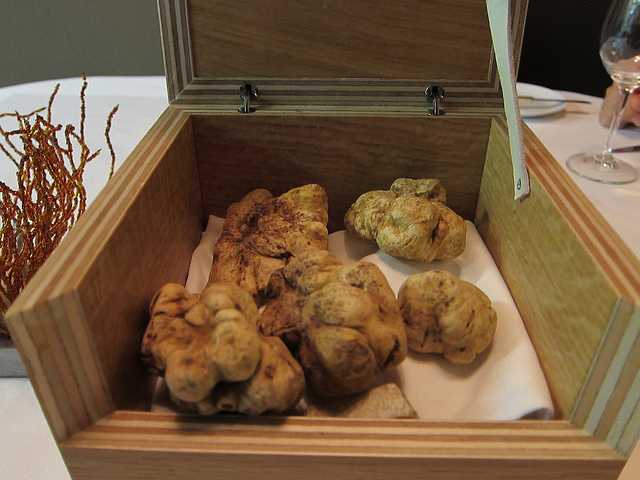
Truffles are some of the most preeminent culinary delicacies in the world. Their price keeps pace with their fame, since retail prices in the United States for truffles have reached $1000 and $3000 per pound. Truffles are a form of mushroom which develops underground in symbiotic association with the roots of trees. The development of technology to inoculate host trees with the fungus under controlled conditions was the breakthrough that made their cultivation possible over the past 20 years.
However, is it possible to grow truffles from your own backyard? That is the question we want to answer in this article. In theory, it is possible if you can reproduce the appropriate conditions to cultivate this fungus and you have the time to wait. There are many trees you can grow truffles on. However, trees need be able to grow in mycorrhizal symbiosis with the truffles. For example, hazelnuts have been used but are sometimes rejected, because their intricate root system makes the truffle fungus much harder to dig out during harvest season.
Still, there are many growers who think that the hazelnut host makes for a better quality of truffle fungus. The reason for this is a deeper root system: the truffles develop gently and consistently deeper in the soil where temperatures are more constant. In order to produce well, truffles need to avoid real extremes. In Summer, the truffles start to form and dry conditions or heat during this time can damages their development. Therefore, heavy mulching and irrigation may be useful if you live in an area which gets less than 700 mm rainfall p.a.
After the truffles have formed, they ripen during Autumn and are ready for harvest in winter. It is important not to let the truffles freeze because they’ll be ruined. Seven good frosts are ideal, but continual snow is certainly not. In case you belong to Diggers Club, the ideal conditions for growing truffles are Cold zone 8-10 and Heat zone 1-4, with good summer rainfall. In order to cultivate truffles, the soil has to be free draining with pH level of 8. It seems that the alkaline conditions eliminate any competition from other mycorrhizal fungus which may be growing in these moist mild conditions.
Keep in mind that it is important not to plant your plant near any other hosts, such as poplars, oaks, nuts or conifers who could potentially carry competing fungus. Some growers have their oaks planted very closely together. They believe that close planting helped produce truffles earlier. However, once the trees grow and start competing for nutrients from soil, some are needed to be culled to allow them to grow into the large trees that they ultimately become. On the other hand, others prefer to prune the canopy to restrict the size and allow sunlight through to the soil.
There are also growers who plant out sparingly, with trees spaced well apart, because they think that in natural conditions truffles grow on the outer edge of the forest where there is no competition for nutrients or light. After planting, the first truffles can be produced from four or five years for some species to ten years for other species. Early producing species may produce for up to twenty years. However, later producers are said to keep going after fifty years. The important thing is to look for grass dying off underneath the tree, leaving an area rough on the surface and brownish in color.
This is an indication of fungal activity for the truffle as it kills off other organisms around it. Fencing is an important factor in the cultivation of truffles, because it keeps out rabbits, kangaroos, foxes and wild pigs. The control is critical, because once exposed, the developing truffle is destroyed. Slugs, snails, weevils and beetles also need to be controlled for successful production. Cultivating anything has its challenges. However, if you do it right, growing truffles can really pay off. Whether it is a hobby or the prospect of a future plan, it’s definitely an exciting prospect as well as industry that will surely grow in the future.



